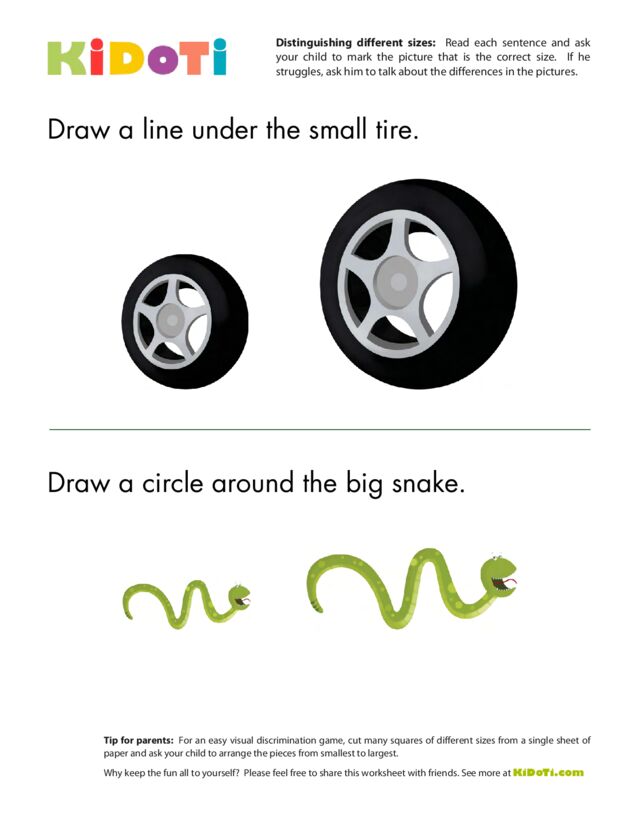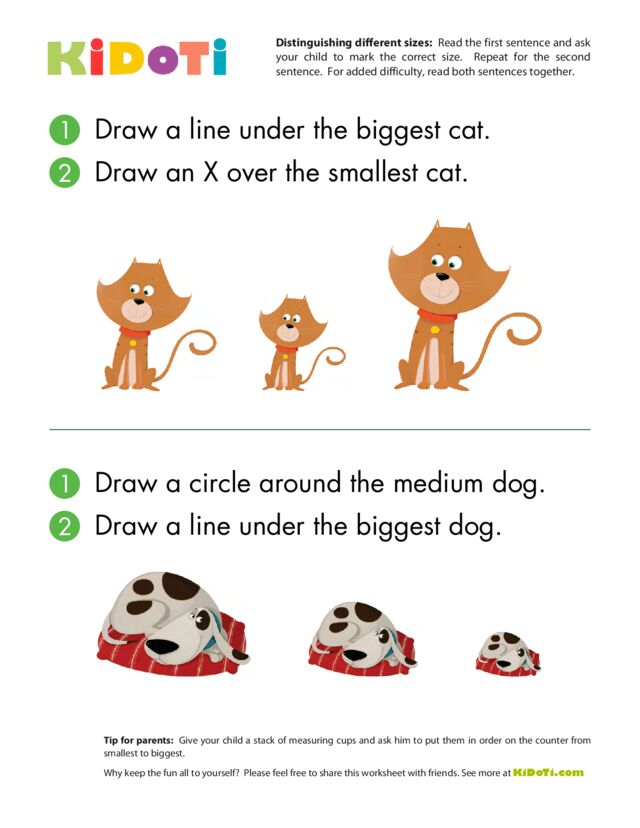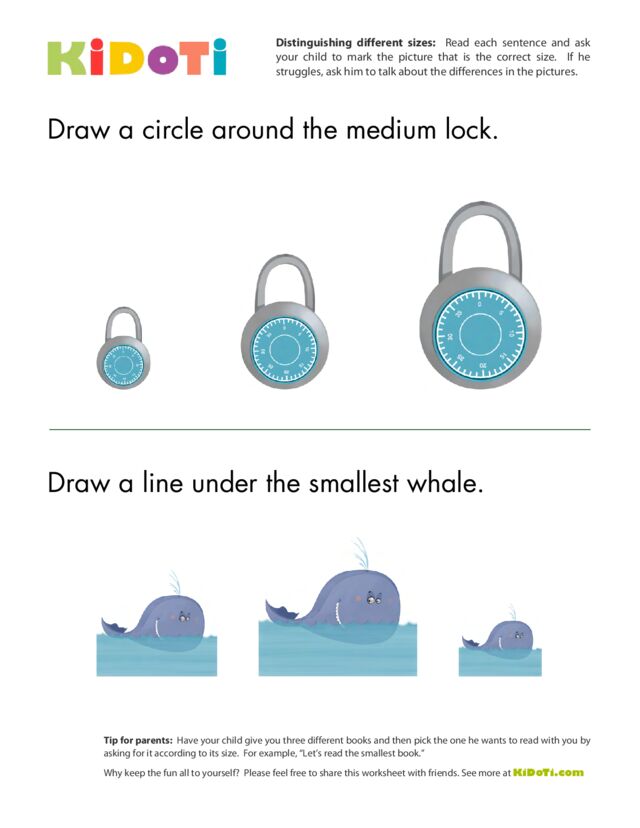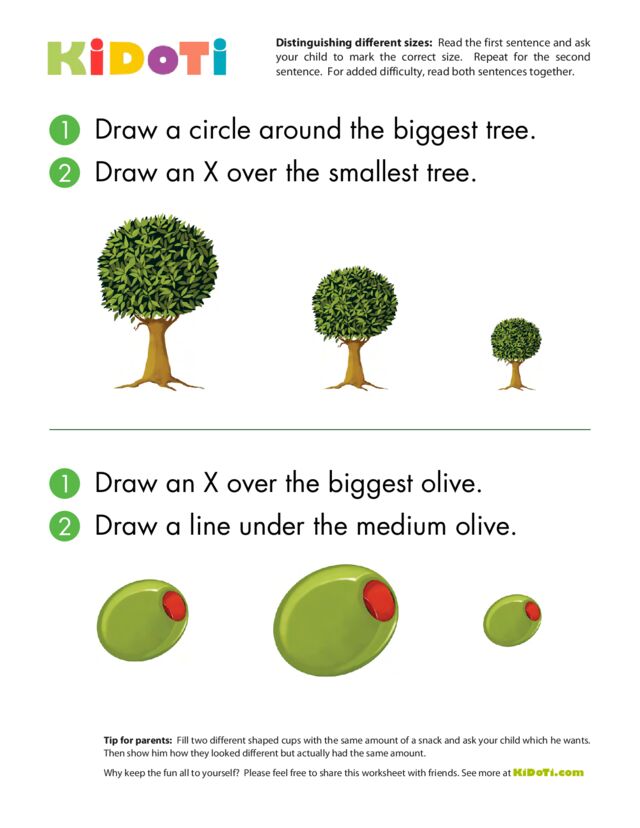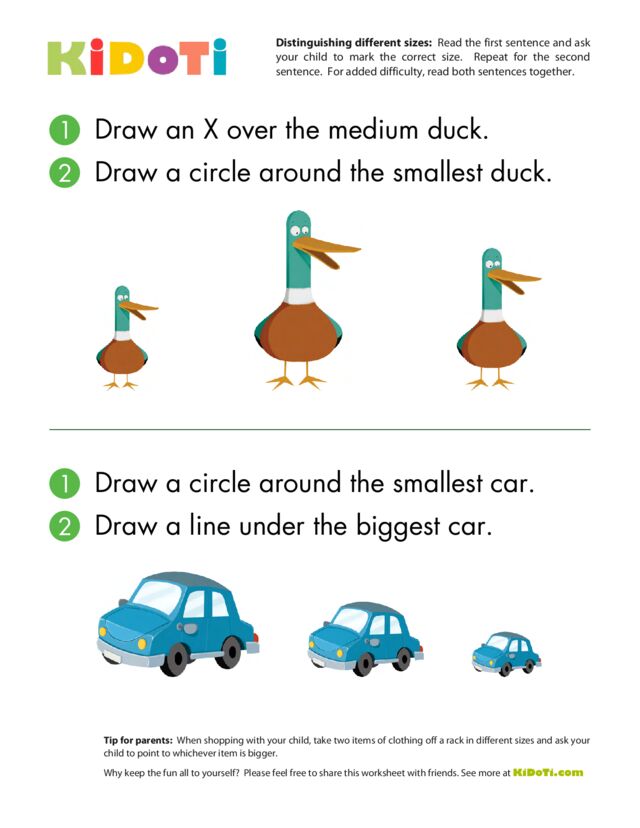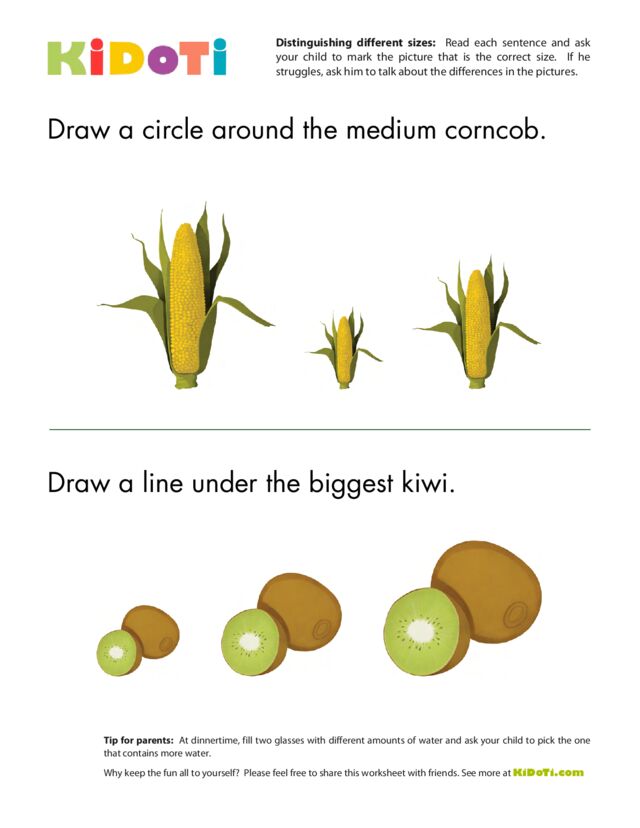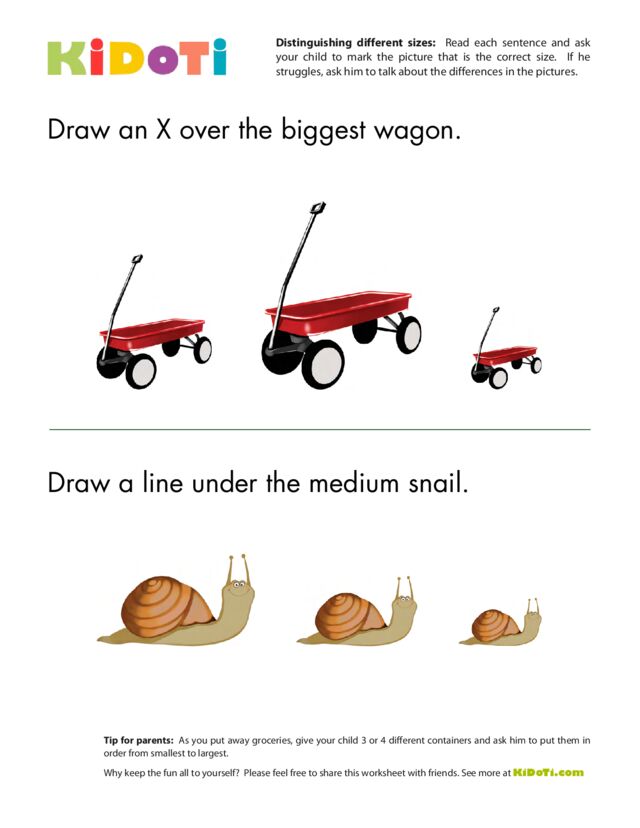Young children learn through observation. They love exploring the world around them, observing the nuances of everything they see. Interestingly, many people, things and places share similar characteristic and may differ in only one or two small ways. The following worksheets are designed to help your child develop strong visual discrimination skills and become adept at quickly noticing small differences in images, people, or things.
Many objects, items, or people may, at first glance, appear very similar. For example, nearly all trees are tall with rough, brown bark and soft, green leaves. However, some trees may have smooth, grayish bark and other trees many have long, pointy pine needles in lieu of leaves. Because of this, an ability to observe these distinguishing characteristics and be able to tell the difference between the many different trees is important.
Tips for using the “Different Sizes” compare and contrast worksheets
Before you introduce the different sizes worksheets to your child, review the terms big, small, medium, biggest and smallest. You might take three very different sized cans or boxes out of your cupboard and ask your child to point to the big one, small one, medium one, etc. Or simply cut a piece of paper into three distinct sizes and question your child to make sure that he understands the vocabulary for this worksheet.
Then, before reading the actual direction, ask your child to point to the small and large picture. (For the intermediate and advanced worksheets, also ask your child to point to the medium sized picture.) If he correctly identifies the sizes and pictures, give your child a pencil and read the directions to him.
If multiple pictures on the page seems distracting for your child, simply fold the page to reveal one set of pictures at a time.
Extra activities to supplement the compare and contrast worksheets
While dining out, have your child look at the table then close his eyes while you remove one or two items from the table. Then have him open his eyes and see if he notices what is different. This activity will help your child notice small differences, as you add and remove minor items from the table, which requires strong visual discrimination skills.
For an easy visual discrimination game, cut many small squares off a single sheet of paper and ask your child to arrange the pieces from smallest to largest. Or, as you put away groceries, give your child 3 or 4 different containers and ask him to put them in order from smallest to largest. Sorting items from smallest to largest requires keen visual discrimination skills as many of the pieces or containers may be very similar in size. You can also give your child a stack of measuring cups and ask him to put them in order on the counter from smallest to biggest.
At dinnertime, fill two glasses with different amounts of water and ask him to pick the one that contains more water. Or, fill two different shaped cups with the same amount of a snack and ask your child which he wants. Then show him how they looked different but actually had the same amount. This is an advanced visual discrimination activity that requires your child to compare not only the height of the item in each container, but also the shape of the different containers.
